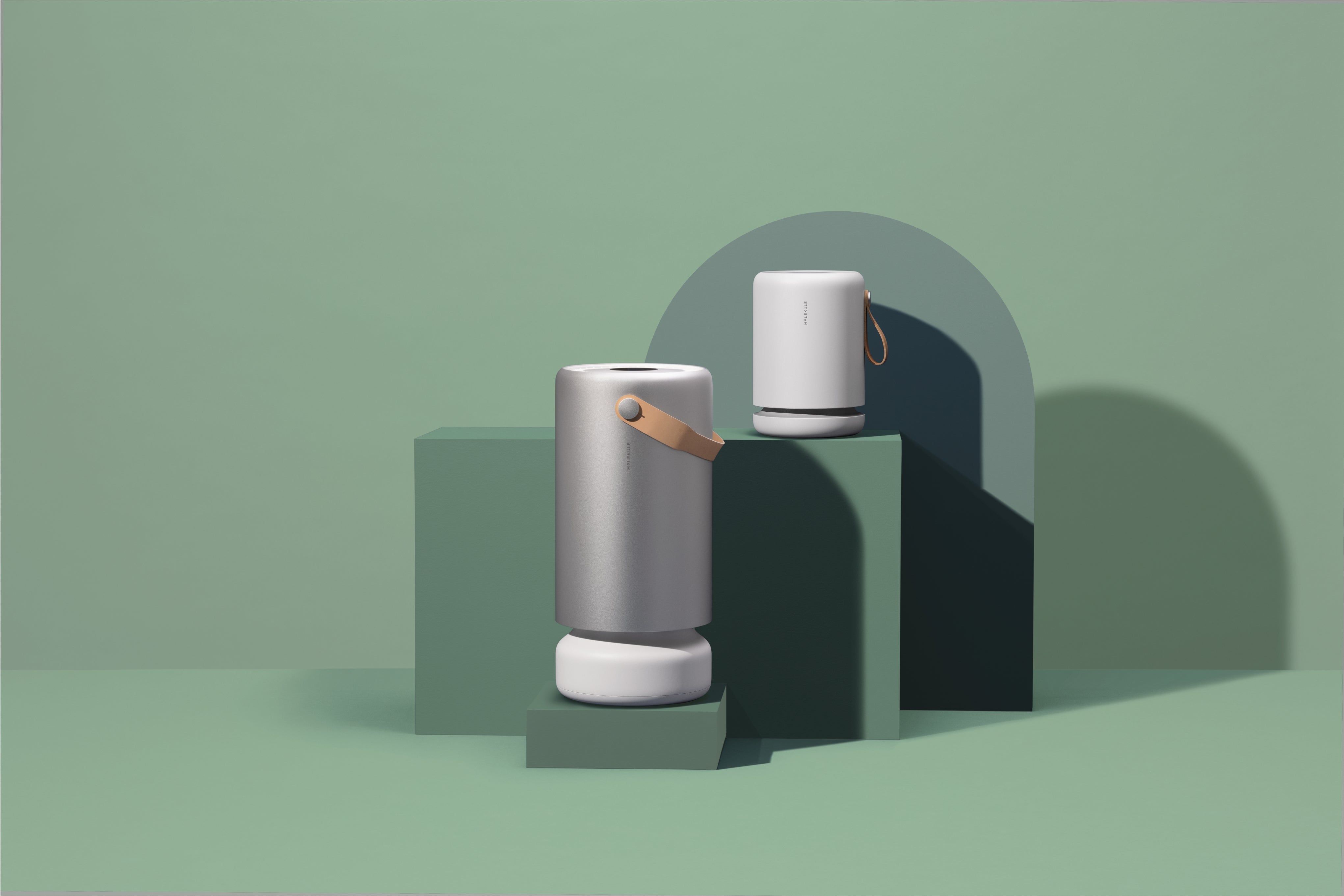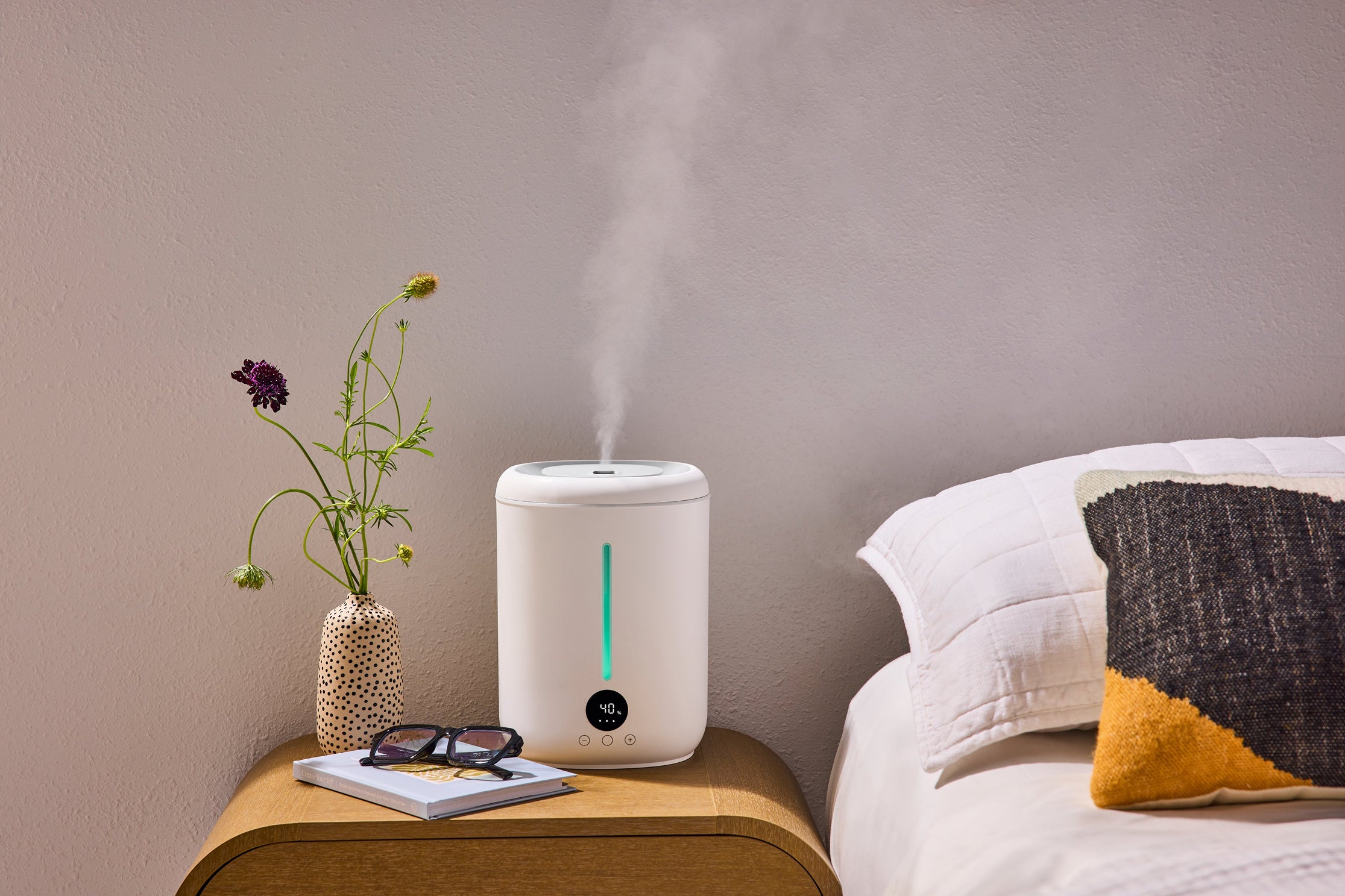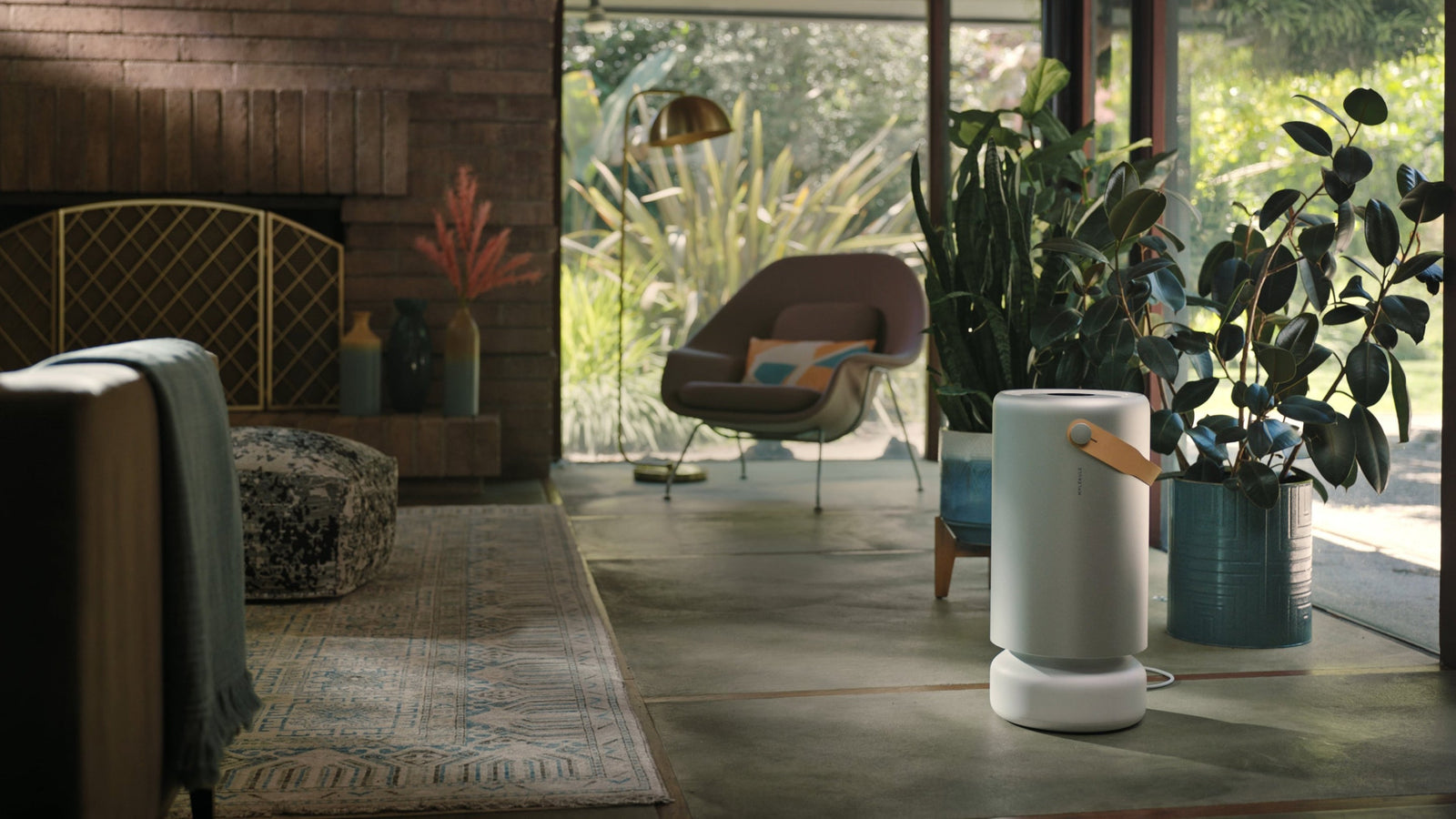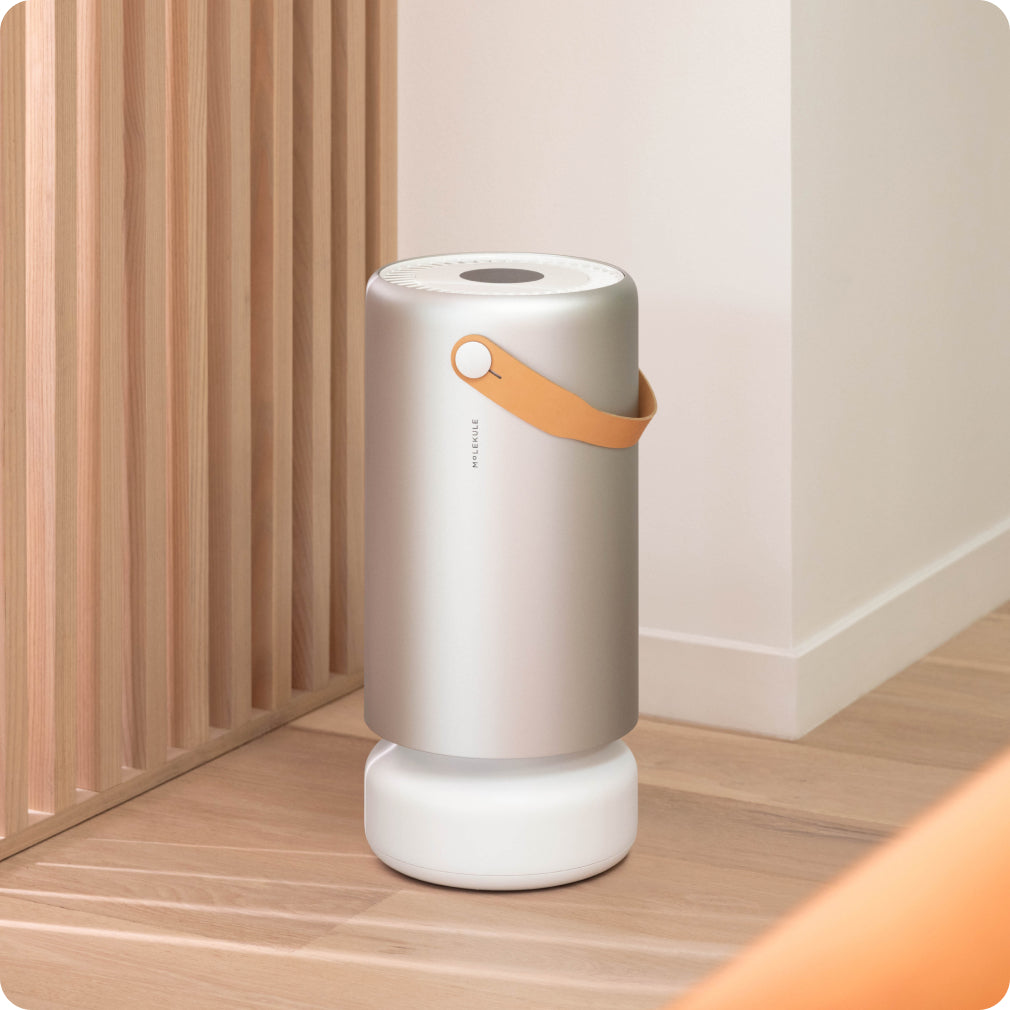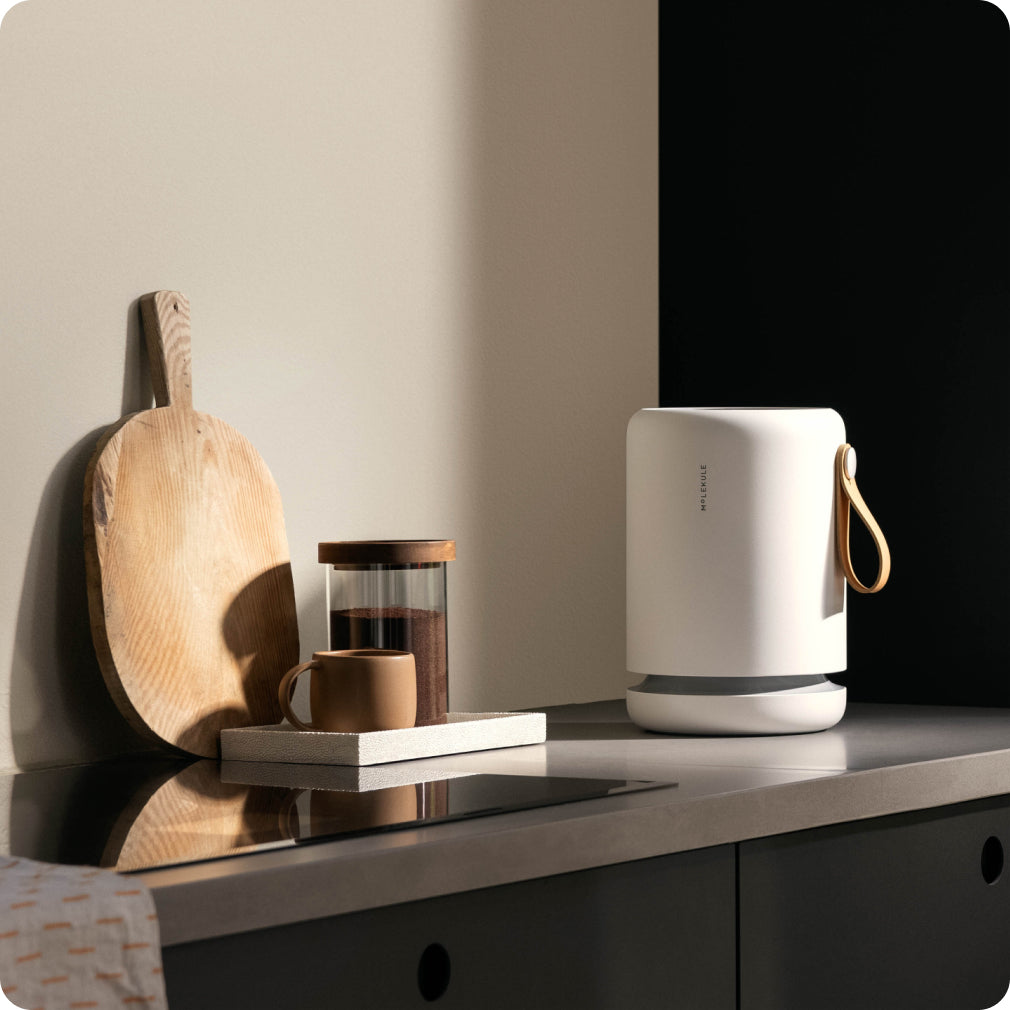If spring blooms leave you sniffling, you’re not alone — seasonal allergies affect millions every year. The good news? You don’t have to give up gardening to breathe easier. By choosing low-allergen plants and designing with pollen in mind, you can enjoy a vibrant outdoor space without the sneezing. Pair those choices with an indoor air purifier, and you’ll have a one-two punch against allergens that helps keep the air around you cleaner, inside and out.
Key Takeaways
-
OPALS Scale: Use the Ogren Plant Allergy Scale to select plants rated 1-3 for minimal allergy risk.
-
Plant Selection: Choose female trees, insect-pollinated flowers, and avoid wind-pollinated species like birch, oak, and ragweed.
-
Design Strategy: Position allergenic plants away from windows and seating areas; use hardscaping and barriers.
-
Maintenance: Regular cleaning, proper watering, and timely pruning prevent mold and reduce pollen accumulation.
-
Indoor Integration: Pair outdoor allergen-reduction strategies with advanced air purification for allergies for comprehensive protection.
Garden Allergens: Understanding the Basics
Garden allergens primarily come from three sources: pollen from wind-pollinated plants, mold spores from decomposing organic matter, and contact allergens from certain plant species. More than 50 million Americans suffer from allergies according to the American College of Allergy, Asthma & Immunology, with garden-related triggers being among the most common culprits during spring, summer, and fall seasons.
Wind-pollinated plants release billions of pollen grains into the air during their reproductive cycles, with tree pollen typically traveling 2-50 miles, while grass pollen can fly 6-8 miles from its source. These microscopic particles easily penetrate indoor spaces through windows, doors, and ventilation systems, making outdoor plant selection crucial for overall allergy management. Consider using an air purifier while sleeping, as people often report their allergy symptoms impacting their quality of life in the bedroom.
The cumulative effect of multiple allergen sources creates what allergy experts call "allergen load," or the total exposure that determines your symptom severity. Understanding how different plants contribute to this load, as well as using the Ogren Plant Allergy Scale, will help you to make informed decisions about what to include or avoid in your landscape design.
What’s the Ogren Plant Allergy Scale (OPALS)?
The Ogren Plant Allergy Scale (OPALS) provides the scientific foundation for creating allergy-friendly gardens. Developed by horticulturist Thomas Leo Ogren and adopted by the American Lung Association and USDA Urban and Community Forestry Program, OPALS ranks plants from 1 (least allergenic) to 10 (most allergenic) based on over 130 different factors, including pollen potency, grain size, bloom duration, and pollination method.
Plants scoring 1-3 on the OPALS scale are considered low-risk options that produce minimal airborne allergens. These typically include female dioecious plants (which don't produce pollen), insect-pollinated flowers with heavy sticky pollen, and certain monoecious plants with low pollen output. Understanding these scientific principles helps you build a garden that naturally filters air rather than contaminating it.
The Best Low-Allergen Trees for Your Garden
Fruit trees excel in low-allergen gardens because their pollen is specifically designed to attract insects rather than travel on wind currents. Apple, cherry, pear, and plum trees produce heavy, sticky pollen that remains close to the flower, dramatically reducing airborne allergen levels while providing beautiful spring blooms and edible harvests.
Low-Allergen Fruit Trees
|
Tree Type |
OPALS Rating |
Key Benefits |
Pollination Method |
|
Apple varieties |
2-3 |
Heavy pollen, insect-pollinated |
Bees and beneficial insects |
|
Cherry trees |
2-3 |
Edible fruit, spring blooms |
Self-fertile or cross-pollinated |
|
Pear trees |
2-3 |
Low maintenance, fewer pests |
Heavy pollen stays localized |
|
Plum varieties |
2-3 |
European types self-fertile |
Insect-dependent reproduction |
Ornamental Trees for Minimal Allergen Impact
Dogwood trees offer spectacular spring flowering displays while maintaining OPALS ratings of 1-2, making them among the most popular allergy-friendly choices in North America. Magnolia varieties, including Southern magnolia and star magnolia, provide large, waxy blooms and year-round interest with minimal pollen production due to their insect-pollination strategy.
Crabapple trees deliver week-long spring color shows in pink, white, red, and magenta hues while producing only localized pollen that doesn't become airborne. These compact trees work well in smaller gardens where space limitations require careful plant selection for maximum beauty with minimal allergen impact.
Trees scoring 7-10 on the OPALS scale should be avoided entirely in allergy-sensitive landscapes
The Best Allergy-Safe Shrubs and Flowering Plants
Boxwood shrubs represent the gold standard for low-allergen landscaping, producing no flower pollen while providing evergreen structure and formal garden appeal. These versatile plants maintain their lush appearance year-round and can be shaped into hedges, topiary forms, or natural groupings that create visual interest without triggering allergic reactions.
Azaleas and rhododendrons offer spectacular seasonal color displays through insect-pollinated blooms that keep their pollen contained rather than releasing it into the air. Hydrangeas produce clusters of flowers in blue, pink, purple, and white with sticky pollen that doesn't become airborne, making them excellent choices for adding dramatic impact to allergy-sensitive gardens.
Colorful Flowers That Won't Trigger Symptoms
-
Roses: Most varieties produce minimal airborne pollen, avoid single-petal types
-
Tulips: Heavy pollen contained within cup-shaped flowers, hybrid varieties preferred
-
Daffodils: Pollen stays within flower cups, excellent for spring color
-
Impatiens: Shade-loving with cheerful blooms and minimal pollen output
-
Petunias: Continuous flowering with insect-pollinated blooms
-
Snapdragons: Vibrant colors and low pollen production
-
Geraniums: Diverse varieties thriving in multiple conditions
These flowering plants prioritize visual appeal through large, showy blooms designed to attract pollinators rather than wind dispersal. Their heavy pollen grains remain close to the source, allowing you to enjoy abundant color without respiratory irritation.
How to Design a Low-Allergy Garden
To design a low-allergy garden, here are specific tips worth trying:
-
Incorporating stone pathways, brick walkways, and paved patios reduces the need for grassy areas while creating clean, low-maintenance zones for outdoor enjoyment.
-
Hardscaping elements prevent pollen accumulation in open areas and provide clearly defined spaces where allergy sufferers can relax without concern about trigger exposure.
-
Raised flower beds allow you to control plant selection more precisely while creating physical separation between potentially allergenic plants and high-use areas.
-
Water features and decorative gravel sections replace traditional mulched areas that can harbor mold spores and collect airborne pollen particles.
-
Position any higher-allergen plants (OPALS 4-6) away from windows, doors, patios, and frequently used walkways to minimize direct exposure during daily activities.
-
Create buffer zones using low-allergen hedges or tall plantings that can filter airborne particles before they reach seating areas or enter your home.
-
Dense evergreen barriers using arborvitae, boxwood, or inkberry holly planted in rows or groups function as natural windbreaks that trap pollen and other airborne allergens.
-
Consider prevailing wind direction, exposure, and slope when planning these protective plantings for maximum effectiveness.
-
Place air purifiers just indoors to capture any particles that bypass your outdoor barriers.
Ground Cover and Grass Alternatives
Cool-climate grasses such as rye and other pasture grasses produce large quantities of wind-borne pollen when flowering, making them significant contributors to seasonal allergy symptoms. Replacing problematic grass varieties with low-allergen alternatives dramatically reduces your garden's overall allergen load.
Options include:
-
Buffalo Grass: Female cultivars like Legacy or UC Verde produce no pollen
-
St. Augustine Grass: Lower pollen production than cool-season grasses
-
Ground Cover Plants: Vinca, pachysandra, or creeping thyme replace grass entirely
-
Synthetic Alternatives: Artificial grass eliminates all pollen while maintaining a green appearance
Ground covers like ivy, moss, or native violets provide living alternatives that suppress weed growth while producing minimal allergens. These options require less maintenance than traditional lawns while creating attractive, low-impact surfaces for foot traffic and visual appeal.
Plants to Avoid in Low-Allergen Gardens
If you have your heart set on a low-allergen outdoor space, here are some plants you absolutely want to avoid:
-
Male trees including birch, elm, maple, oak, ash, alder, and olive trees release massive amounts of wind-borne pollen that can travel for miles.
-
Juniper, cypress, and pine varieties also contribute significantly to seasonal allergen loads.
-
Popular but problematic shrubs include privet hedges, male yew plants, and mountain laurel, all of which produce substantial amounts of airborne pollen during their flowering periods.
-
Sunflowers, chrysanthemums, and daisies belong to the Asteraceae family and are distant cousins to ragweed, making them particularly problematic for people with ragweed allergies.
-
Ornamental grasses that rely on wind pollination should be avoided entirely, as their timing often coincides with peak allergy seasons.
-
Bermuda grass, Timothy grass, and other cool-season varieties produce pollen that becomes easily airborne and widely distributed throughout neighborhoods.
Year-Round Allergen Control
In the spring, remove debris that accumulated over the winter as it can harbor mold spores, and prune dead branches to improve air circulation around plants. Clean your garden tools and storage areas to eliminate overwintering allergen sources.
Monitor local pollen forecasts and plan garden activities for low-count days, typically after rain or during early morning hours when pollen levels are naturally reduced. Natural congestion remedies can provide additional support during unavoidable high-exposure periods.
In the summer and fall, maintain your grass height at 2 inches to prevent seed head formation that contributes to airborne pollen. Remove weeds before they flower and go to seed, particularly ragweed which becomes problematic in late summer and fall. Water your gardens in the early morning so excess moisture can dry during the day, preventing mold growth. Use air purifiers indoors to help slow mold growth and remove potential allergens.
Protective Gardening Practices
-
Personal Protection: Wear NIOSH-approved masks, gloves, long sleeves, and eye protection during gardening
-
Timing Strategy: Garden on windless, cloudy days when pollen counts are lowest
-
Post-Activity Protocol: Shower and change clothes immediately after gardening to remove trapped allergens
-
Tool Management: Wash gardening equipment regularly to prevent allergen accumulation
Ask family members or friends without allergies to handle high-pollen tasks like lawn mowing and weed removal during peak season. Keep your windows closed during and for several hours after these activities to prevent allergen infiltration.
Consider consulting with allergists for personalized advice about which specific allergens affect you most severely. Understanding common allergy triggers will help you identify and eliminate overlooked sources throughout your property.
Frequently Asked Questions
What is the OPALS rating system and how do I use it?
The Ogren Plant Allergy Scale rates plants from 1 (least allergenic) to 10 (most allergenic) based on over 130 factors including pollen type, bloom duration, and pollination method. Choose plants rated 1-3 for low-allergen gardens, avoid anything above 6, and never use plants rated 9-10.
Can I have flowering plants in an allergy-friendly garden?
Yes, many flowering plants are excellent choices for allergy sufferers. Focus on insect-pollinated flowers like roses, tulips, daffodils, and snapdragons that have heavy, sticky pollen rather than wind-pollinated species that release light, airborne particles.
Which trees are worst for allergies and what should I plant instead?
Avoid male trees like birch, oak, elm, maple, and olive that produce massive amounts of wind-borne pollen. Choose fruit trees (apple, cherry, pear), dogwoods, magnolias, or female varieties of dioecious species that don't produce pollen.
How do I maintain an allergy-friendly garden without triggering symptoms?
Garden during low pollen times (early morning, after rain, windless days), wear protective equipment including masks and gloves, shower immediately after gardening, and ask non-allergic family members to handle high-pollen tasks like mowing.
Should I combine my low-allergen garden with indoor air purification?
Absolutely. While garden design reduces outdoor allergen sources, air purifiers with molecular destruction technology like Molekule's PECO systems eliminate allergens that inevitably enter your home, providing comprehensive protection both indoors and outdoors.
What ground cover alternatives work best for replacing allergenic grass?
Consider female buffalo grass cultivars, St. Augustine grass, living ground covers like vinca or pachysandra, or synthetic grass for completely pollen-free surfaces. These alternatives reduce maintenance while eliminating grass pollen sources.
